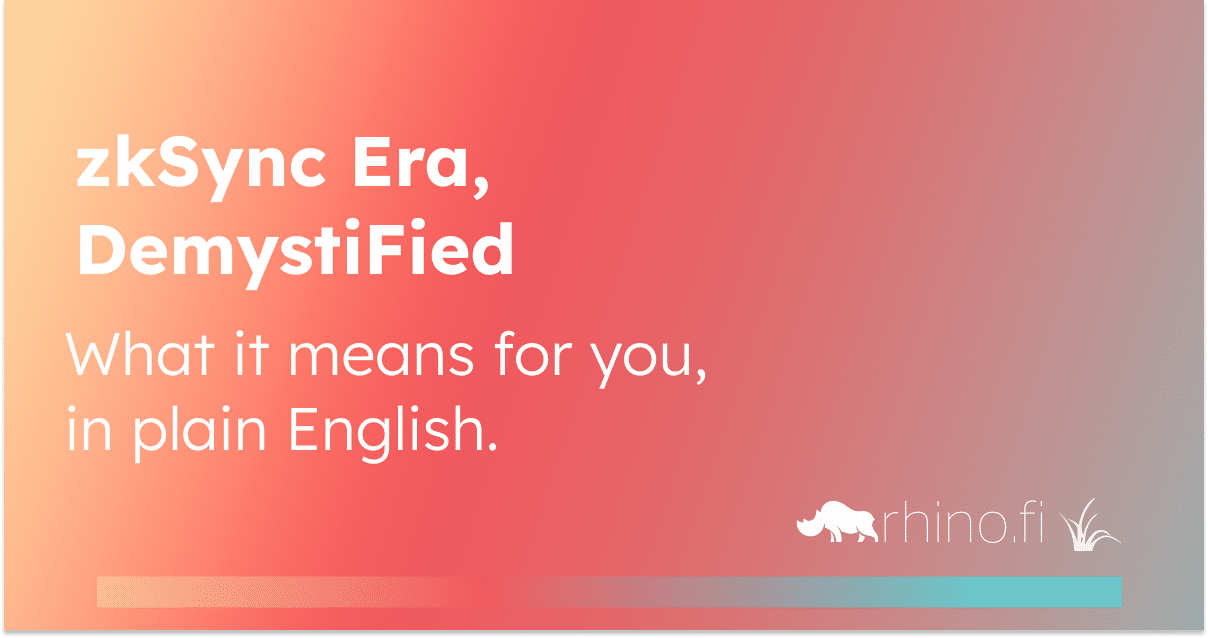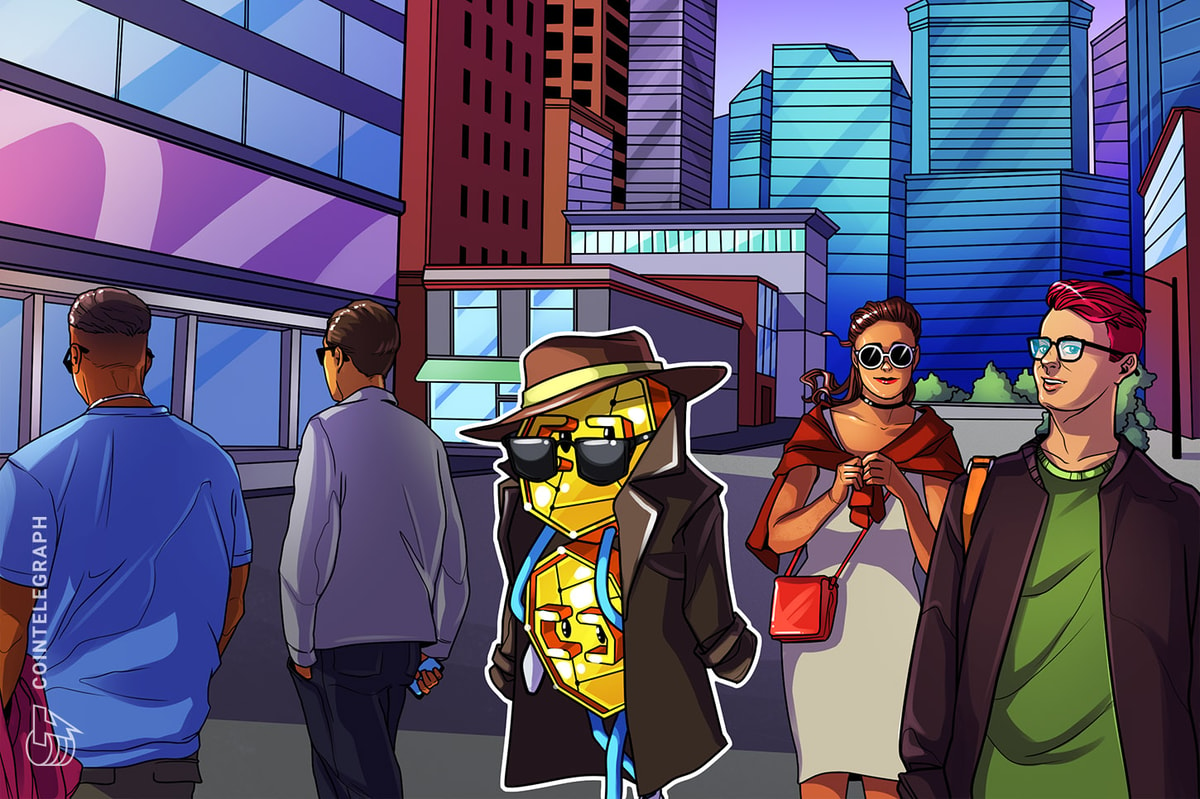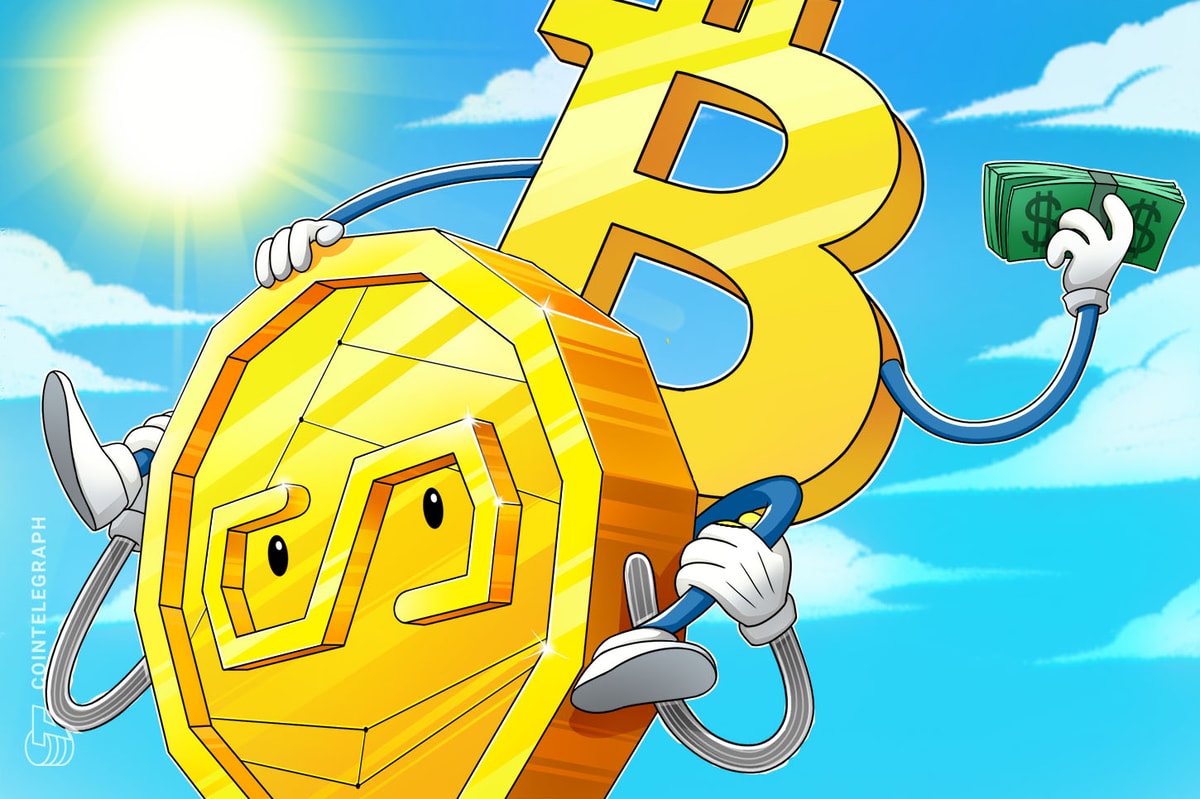Ok, so what is zkSync Era, very simply?
zkSync Era is a scaling solution for Ethereum, designed to ease demand and provide a better experience for traders.
It’s a rollup built on layer 2, a superhighway on top of the Ethereum blockchain. So when you use it, you avoid all the snarly congestion at peak times and it can process your transactions in bulk, rather than individually.
Specifically, zkSync Era is a zkEVM, which means a zero knowledge-compatible Ethereum Virtual Machine.
This means that the project can execute the smart contracts built using the Ethereum Virtual Machine – the programming environment which is used to create all logic on Ethereum – in a way that is compatible with zero-knowledge technology.
Smart contracts govern the transactions you make every day. Every time you swap, trade, invest or farm on Ethereum, you’re doing so with a smart contract – a programme which is set to execute automatically once certain conditions are met. zkSync Era can take these transactions and process them using zero-knowledge validation.
Instead of relying on human validators, the zk technology essentially sets itself a series of mathematical challenges to prove it followed the correct steps when crunching the numbers. Crucially, the validation engine can show its working without revealing any details about either party (hence the name zero-knowledge).
If you want a deep-dive on how zero-knowledge technology works, here’s our explainer.
Ok, that’s great. But what does this actually mean for me as a trader?
Essentially, your transactions are processed far more quickly, and cheaply, than is possible on the main Ethereum blockchain.
For one thing, the rollup is able to process a whole bunch of transactions at once and then submit a single proof back to the main chain, which would otherwise have to prove all these transactions separately.
For another, the zero-knowledge proof technology avoids the need for human validators, so it can process your transactions much more quickly than would be possible using alternative validation techniques.
And, because everything is happening on layer 2 of Ethereum, aside from the busy main blockchain which is creaking under the weight of demand, you don’t face the hefty gas fees at peak times.
But because your transactions are posted back onto layer 1, they inherit all the battle-tested security features of the main chain.
Ok, anything else to note here?
Yes. Actually there’s another feature of zkSync which is just as important (and has been far less widely covered) than the zk aspect, and it’s known as account abstraction.
On zkSync Era, dApp builders will be able to upgrade their users from externally owned accounts (EOA) to smart contract accounts.
An EOA is an account which connects to the blockchain to make transactions, using public keys (or passwords). A smart contract account is permanently wired into the blockchain itself, with no need to continually reconnect.
This has loads of benefits, including the ability to:
- Replace complex key phrases with more mainstream forms of security, like biometric verification.
- Pay fees in any token.
- Execute multiple transactions in one session.
Ok, so what can I actually do on zkSync Era?
Just like Arbitrum and Optimism, both of which are rollups, zkSync allows you to do anything you can do on the main Ethereum blockchain – or, to put it another way, anything you can do with smart contracts.
So as well as making everyday trades, swaps etc, you can write your own smart contracts and build your own applications.
The main difference is that Optimism and Arbitrum are optimistic rollups, which rely on a different form of validation to zk rollups. Advocates of zk technology would say it is more secure than optimistic validation, and cheaper to scale. Optimistic rollups also have a certain ‘challenge period’, which is designed for security but can be a drag.
(If you want a deeper look at the whole zk rollups vs optimistic rollups issue, check out our explanation here).
Right, so which projects will I be able to find on zkSync Era?
A whole bunch of the dApps you’ve already used on Ethereum are currently building on zkSync. In other words, they’re creating rollup-compatible versions of themselves, with the same UI but designed for super-fast validation.
The ecosystem will include a mix of DEXs, NFT Hubs, wallets and ecosystem projects. Some of the most notable will include:
- Yearn
- Sushi
- OKX
- Uniswap
- Index Coop
And, of course, rhino.fi.
What are the benefits of exploring zkSync Era now?
Basically, you’re getting yourself ready for when all these cool new apps roll out (which won’t be long).
By bridging your assets now with rhino.fi, you’ll have them ready… without paying any fees to get them there.
Ok, I’m intrigued. Where’s that bridge again?
Our bridge to zkSync Era is live now.
The bridge avoids all the pain-points you’ve found when porting assets cross-chain on other platforms. You won’t have to switch networks, you won’t need to hold native gas, and the whole UX is designed to be as simple as possible.
If you’re ready to bridge your funds, or just see how it works, here’s the portal.
Read More: rhino.fi









 Bitcoin
Bitcoin  Ethereum
Ethereum  Tether
Tether  XRP
XRP  Solana
Solana  USDC
USDC  Dogecoin
Dogecoin  TRON
TRON  Cardano
Cardano  Lido Staked Ether
Lido Staked Ether  Wrapped Bitcoin
Wrapped Bitcoin  Hyperliquid
Hyperliquid  Sui
Sui  Wrapped stETH
Wrapped stETH  Chainlink
Chainlink  Avalanche
Avalanche  LEO Token
LEO Token  Stellar
Stellar  Bitcoin Cash
Bitcoin Cash  Toncoin
Toncoin  Shiba Inu
Shiba Inu  Hedera
Hedera  USDS
USDS  Litecoin
Litecoin  WETH
WETH  Wrapped eETH
Wrapped eETH  Polkadot
Polkadot  Monero
Monero  Binance Bridged USDT (BNB Smart Chain)
Binance Bridged USDT (BNB Smart Chain)  Ethena USDe
Ethena USDe  Bitget Token
Bitget Token  Pepe
Pepe  Coinbase Wrapped BTC
Coinbase Wrapped BTC  Pi Network
Pi Network  WhiteBIT Coin
WhiteBIT Coin  Aave
Aave  Uniswap
Uniswap  Dai
Dai  Ethena Staked USDe
Ethena Staked USDe  Bittensor
Bittensor  OKB
OKB  NEAR Protocol
NEAR Protocol  Aptos
Aptos  Cronos
Cronos  BlackRock USD Institutional Digital Liquidity Fund
BlackRock USD Institutional Digital Liquidity Fund  Internet Computer
Internet Computer  Jito Staked SOL
Jito Staked SOL  Ondo
Ondo  Ethereum Classic
Ethereum Classic